Легендарные гот-панки BAUHAUS возвращаются.
Peter Murphy при рекламировании своего последнего релиза 23 июля "Unshattered" в Утрехте сообщил, что он сейчас находится в процессе сбора участников BAUHAUS`a для записи нового материала.
"Я работаю над реформированием группы уже год. И сейчас стало ясно, что мы проведем тур в Германии, а затем проедимся по всему миру, а также запишем новый альбом", сообщил Peter.
Напомним, BAUHAUS являются одними из прародителей стиля готик-рок. Группа распалась в 1983 году, но в 1998 году дали таки несколько ретро-концертов.





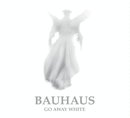
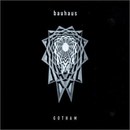
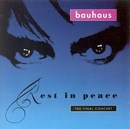
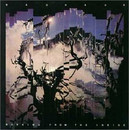
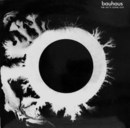
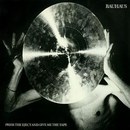
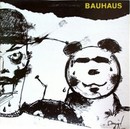
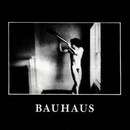
Bauhaus first broke up in 1983. Peter Murphy began a solo career while the other members continued as Tones on Tail and, later, Love and Rockets. Both enjoyed greater commercial success in the United States than Bauhaus had, but disappeared from the charts in their homeland. The band reunited for a 1998 tour and on a more permanent basis in 2005. The group announced plans to disband again before the release of their final album, Go Away White (2008).
History
David J. Haskins, his younger brother Kevin Haskins and their friend Daniel Ash had played together in various bands since childhood, often not lasting more than one gig. One of the more long-lived of these was a band called The Craze, which did a few gigs around Northampton. The band soon split however and Ash once again tried to convince his old school friend Peter Murphy to join him, simply because Ash thought he had the right look for a band.[1] Murphy, who was working in a printing factory, decided to give it a try, despite never having written lyrics or sung. During their first rehearsal, they co-wrote most of the song "In the Flat Field."[2] Ash's old band mate Kevin Haskins joined as the drummer. Ash made a point of not inviting David J, the driving force in their previous bands, because he wanted a band he could control.[3] After only a few weeks though, Ash reconsidered and invited David J to replace original bassist Chris Barber. Haskins had already agreed to tour American airbases with another band, but decided that joining his friends' group was "the right thing to do." With their lineup complete, the unnamed band played their first gig at the Cromwell pub in Wellingborough on New Year's Eve 1978.[4]
The band chose the name Bauhaus 1919, a reference to the German Bauhaus art movement of the 1920s, because of its "stylistic implications and associations", according to David J.[5] Bauhaus associate Graham Bentley said that the group was unlike any Northampton band of the time, most of which played predominantly cover songs.[6] Bentley videotaped a performance by the group, which was sent to several record labels in the hope of obtaining a contract. This approach was hindered partly because many record companies at the time did not have home video equipment or Bentley had to provide it himself, so the group decided to record a demo.[7]
"Bela Lugosi's Dead" and 4AD
Music Sample:
*
"Bela Lugosi's Dead"
Play sound
Sample of "Bela Lugosi's Dead", Bauhaus's debut single from 1979. Inspired by Béla Lugosi, the star of the 1931 Dracula film, the song was described by music writer Simon Reynolds as being "generally identified as the ground zero of Goth proper."[8]
* Problems playing the files? See media help.
Together for only six weeks, the band entered the studio for the first time at Beck Studios in Wellingborough to record a demo.[9] The band recorded five songs; one of the tracks from the session, "Bela Lugosi's Dead", running more than nine minutes, was released as the group's debut single in August 1979 on Small Wonder Records as Bauhaus (the 1919 abandoned).[10][11] The single received a positive review in Sounds and stayed on the British independent charts for two years. The song received crucial airplay on BBC Radio 1 DJ John Peel's evening show and Bauhaus was subsequently asked to record a session for Peel's show, which was broadcast on 3 January 1980.[12]
The band released three more singles, "Dark Entries", "Terror Couple Kill Colonel" and "Telegram Sam" (originally written by glam rock pioneers T.Rex) before the debut of their first album In the Flat Field in 1980 on 4AD. Simon Reynolds has suggested in his Rip It Up and Start Again: Post Punk 1978–1984 that the fan base of Bauhaus swelled around this time partly due to the dissatisfaction of a large numbers of Adam and the Ants fans, who had rejected the Ants' new image and direction when they dropped their previous S&M, bondage and kabuki imagery in search of pop success. Despite negative reviews, In the Flat Field topped the indie charts and made headway onto the British pop charts, peaking for one week at number 72.[13]
[edit] Beggar's Banquet and breakup
Bauhaus' growing success outstripped 4AD's resources, so the band moved to 4AD's parent label Beggars Banquet Records.[14] Bauhaus released "Kick in the Eye" as its debut release on the label. The single reached number 59 on the charts.[15] the following single "The Passion of Lovers" peaked at number 56.[16] Bauhaus released its second album Mask in October 1981. The band employed keyboards and other instruments to add to the album's sounds. In an unconventional move, the group shot a video for the album's title track as a promotional tool for the band as a whole and not